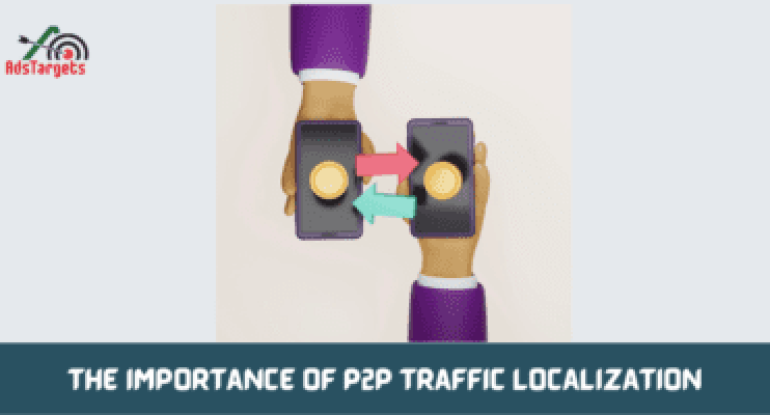If you’ve ever used BitTorrent, Skype, Limewire, or Ares, you know what peer-to-peer (P2P) software is. In its simplest definition, it’s software that allows individual computer systems called peers to connect, communicate, or share files with each other without a separate server.
Software such as this is typically used to share videos, TV shows, movies, music, and other digital media files. It enables simple file sharing and receiving, even if one of the computers on the server goes down. Others are there to pick it up.
Still, P2P traffic isn’t perfect, and there’s room for advancement. This is especially the case since the outbreak of the COVID-19 pandemic when the global use of P2P software went up significantly. One of the ways to improve this traffic is P2P traffic localization.
Below, we’ll explain what P2P traffic localization is and why it’s important to all users of P2P software.
source: Pexels
Table of Contents
ToggleWhat is P2P Traffic Localization
Users of the P2P software are spread across the globe. It’s estimated that 60% of global internet traffic is driven by P2P applications. Oftentimes, people from different parts of the planet can be sharing or leaching the same media at the same time. On the other hand, there can be two people living next door doing the same thing.
P2P traffic localization aims to find the best link between people on the same server and connect those closest to each other. So, instead of connecting one of the neighbors to a person in Uruguay and the other to someone in Spain, this system will connect the two neighbors to each other.
Simply put, P2P traffic localization is:
- optimizing P2P traffic by considering the physical distance between peers and connecting them accordingly.
Let’s say you’ve downloaded a huge amount of essay samples from TopEssayWriting. You’re sharing it online with different users. If users are properly connected, the process will last significantly shorter than if they’re randomly selected.
This method brings numerous benefits to all users and is an important segment of making the software high-functioning and efficient. Below, we’ll discuss how.
The Importance of P2P Traffic Localization
Now, let’s take a look at the importance of P2P traffic localization. We’ve made a list of the top reasons why it’s crucial for all P2P software.
- Saving Bandwith
Sharing media files, communicating in real-time, and generally using P2P traffic often require a lot of information to be packed and transmitted. It’s only natural that users want bandwidth that can support their needs and transmit the desired information quickly. Thus, the greater the bandwidth the better the user experience.
But, with P2P traffic, we often come across poor bandwidth in cases where there is no traffic localization. Why?
Because the servers are too busy connecting randomly selected peers who can be thousands of miles away from each other, thus losing their bandwidth. This can easily be avoided with traffic localization.
By connecting peers based on geographical position, we are:
- saving room for additional information on the server
- removing redundant operations
- creating more bandwidth
- speeding up the entire process
This makes all the users happier and improves the functionality of the software.
- Ensuring Minimum Delay
Whatever it is that you’re transferring, you want your packet to arrive quickly and without delay. Unfortunately, we’ve all been in a situation where the downloading is stuck at a certain percent and won’t move.
This is because the servers get overwhelmed by all the information and underlying processes happening, and it simply can’t work properly for minutes or even hours.
For instance, if there are medical translation services online that want to share their database with their other branches worldwide, they’d use a P2P server. If this is something urgent to send, they need a minimum delay. Proper localization will enable it.
P2P traffic localization could remove this type of delay and allow servers to work more freely. With fewer background processes of connecting distant peers, things would run more smoothly and without interruptions.
- Cost Efficiency
When we’re talking about P2P software and applications, we somehow seem to be forgetting about the internet service providers (ISPs) who are responsible for utilizing all this traffic.
They have to deal with a huge amount of traffic generated while these services are working. This can be quite costly, and the profit from providing this service just isn’t worth it.
The reason why so much cross-ISP traffic is being generated is the lack of P2P traffic localization. By ignoring this segment of the process, a lot of burdens are placed on ISPs. To control costs, ISPs have to slow down or withhold P2P traffic.
This is another reason why P2P traffic localization is important:
- it removes redundant traffic
- ISPs have lower costs
- ISPs support full P2P traffic
- users get the best experience
It works with and for everyone involved and helps all actors get the most out of the experience.
- Improved QoS
Finally, all of the above leads to one last major benefit of P2P traffic localization. It leads to a better quality of service (QoS). The users get better service, while the service providers get lower costs, better feedback, and more space to work even harder.
Final Thoughts
P2P traffic localization is extremely important for the proper functioning of these applications and software. But the users and providers of the given services want better bandwidth, throughput, and speed, with less delay, packet loss, and unnecessary costs.
It’s safe to say that P2P traffic localization deserves to be a top priority for developers, engineers, and service providers.




